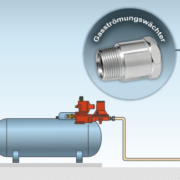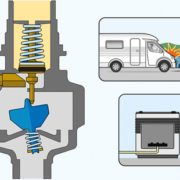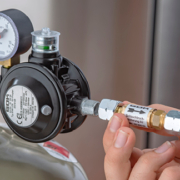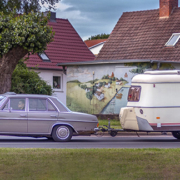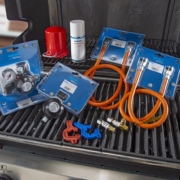Can I heat my motorhome and caravan while driving?
Do you want to use the gas system of your motor caravan or caravan while driving? Particularly when the temperatures drop, it’s very comfortable to crank up the gas heating on the journey so that you have a pre-heated living space when you arrive at your destination. Operation while driving is permitted, but only if certain technical requirements are met, the key words: Crash sensor and excess flow device!
***Update***
The following article only refers to the wall-mounted gas pressure regulation systems from GOK, in order to be able to operate the vehicle with LPG during the journey. The newly developed Caramatic SafeDrive also has an integrated crash sensor, but has a completely different system design. More information here:
Camping surely also works if you don’t activate the gas system while driving, although admittedly, for many campers, doing so is significantly more comfortable. Winter campers in particular appreciate it when the rear of the motor caravan or caravan isn’t icy cold when they arrive at the campsite.
Dangerous while driving?
Of course, you can understand that some campers are a bit sceptical when they hear that they can operate the gas system while driving. What happens if there’s an accident, may I ask? If one were to occur, theoretically, unburned LPG might escape. Isn’t that very dangerous?
No, it’s not. Thousands of this kind of systems have been running for years and nothing dramatic has happened to them yet. However, this also has its reasons, because the gas system always needs two safety devices, as we mentioned at the start.
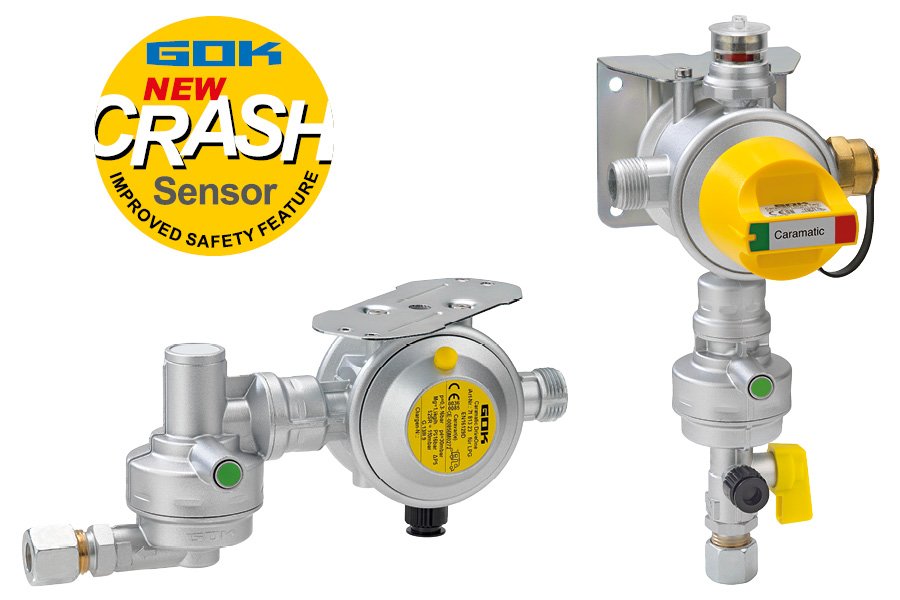
Part one: Crash sensor
One is the crash sensor. This is a component of the gas pressure-control device, for example from a GOK Caramatic DriveOne or Caramatic DriveTwo. If the camper is involved in a traffic accident, the crash sensor with pendulum solution ensures that the gas flow stops upon impact and no more LPG escapes. You can see exactly how the crash sensor works in this animated video:
You are currently viewing a placeholder content from Youtube. To access the actual content, click the button below. Please note that doing so will share data with third-party providers.
More InformationPart two: Excess flow valve
Part two of the protective safety devices is an excess flow device. If you wish to operate the gas system while driving, you need a high pressure hose assembly to connect directly to the gas cylinder and this gas hose must in turn have an integrated excess flow device.
What do these safety devices do? If the gas hose is pulled off or a massive leak develops, the excess flow device detects this and blocks the gas flow directly at the gas cylinder. This then also prevents unburned gas from escaping.
While the risk of traffic accidents might not be ruled out, this combination of crash sensor and excess flow device at least reduces the potential for danger after an accident.
You are currently viewing a placeholder content from Youtube. To access the actual content, click the button below. Please note that doing so will share data with third-party providers.
More InformationWhere does it come from? Brussels!
The regulations requiring the safety devices mentioned are uniform across Europe. And in DIN EN 1949:2013-05 “Specification for the installation of LPG systems for habitation purposes in leisure accommodation vehicles and accommodation purposes in other vehicles.” And here you will find:
“If it is the intention for a heating system or other device to be used while driving, there must be a feature which prevents the uncontrolled escape of LPG based on an accident-related disconnection (according to the European Directive 2006/119/EC).”
The worksheet G 607 (A) from the German Technical and Scientific Association for Gas and Water (DVGW), more well known among campers owing to the gas tests, makes explicit reference to section 6.1.3 of the European standard.
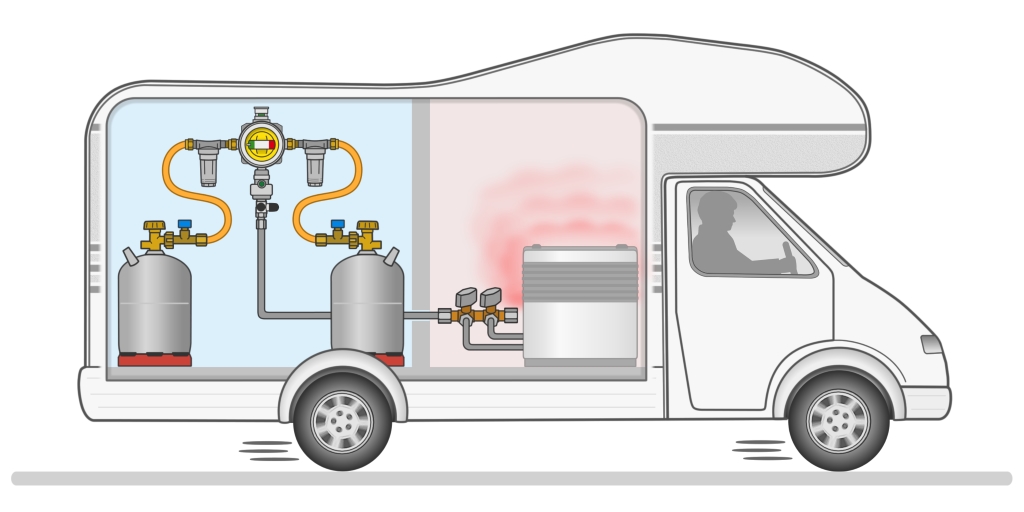
Conclusion
If you don’t want to go without your gas heating while driving for comfort reasons, for example, you can do so without ever compromising your safety. This is what the crash sensor and excess flow device safety devices are for. Both of these are the basic requirements for operating the LPG system while driving.

